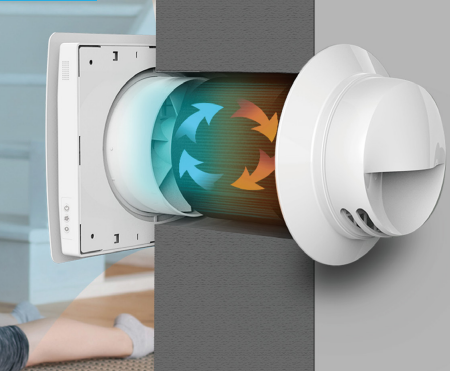A Simple Guide to HRV Filter Cleaning
Exploring the Benefits of Heat Recovery Ventilation for Power Performance in Homes
Heat Recovery Ventilation (HRV) systems offer house owners a useful strategy to enhancing power effectiveness. By recovering warmth from outbound air, these systems can significantly reduce cooling and heating prices. Furthermore, they provide a consistent supply of fresh air, enhancing interior air high quality and convenience degrees. As property owners take into consideration sustainable choices, recognizing the nuances of HRV systems comes to be increasingly crucial. What factors should one review before making such a financial investment?
Understanding Heat Recovery Ventilation Solutions

Exactly How HRV Improves Indoor Air High Quality

Power Financial Savings: The Monetary Benefits of HRV
Optimizing energy efficiency, heat recovery ventilation (HRV) systems supply substantial monetary advantages for homeowners. By recovering and reusing warm from exhaust air, HRVs noticeably lower cooling and heating expenses. This modern technology her comment is here can cause energy cost savings of as much as 30%, depending upon climate and use patterns. Property owners usually discover decreased utility expenses soon after installation, making HRVs an economically sensible investment in time. Furthermore, lots of areas offer incentives or rebates for energy-efficient upgrades, additionally improving the monetary charm. As energy rates remain to climb, the cost-effectiveness of HRVs becomes progressively clear. Generally, the incorporation of HRV systems not only promotes energy performance but also adds to lasting financial cost savings for families.
The Environmental Effect of Heat Recovery Ventilation
A significant environmental benefit of heat recovery ventilation (HRV) systems exists in their capability to lower general power consumption. By reclaiming warmth from exhaust air and moving it to inbound fresh air, HRV systems decrease the requirement for energy-intensive home heating and cooling approaches. This decrease in energy demand adds to decrease greenhouse gas exhausts, as much less nonrenewable fuel source is required to maintain comfy indoor temperature levels. In addition, HRV systems boost indoor air high quality by efficiently trading stagnant air with fresh outdoor air, minimizing dependence on mechanical cooling systems that can damage the atmosphere. Generally, the application of HRV systems supports lasting living techniques and lines up with international efforts to combat environment adjustment by promoting energy performance in residential settings.
Choosing the Right HRV System for Your Home
How can home owners guarantee they pick the best heat recovery ventilation (HRV) system for their requirements? First, they should assess their home's size and design, as these factors influence airflow read the article needs. Next, evaluating the system's efficiency ratings is essential, as greater scores suggest far better performance and energy financial savings. House owners should likewise take into consideration setup and maintenance prices, contrasting various brands and models for worth. In addition, it is very important to review sound levels, as some systems operate even more silently than others. Consulting with heating and cooling specialists can provide tailored recommendations based upon details home conditions. Lastly, analyzing user testimonials and guarantees can aid in making an informed choice, making sure that the selected HRV system successfully boosts indoor air high quality and power efficiency.
Often Asked Inquiries

Just how Often Should I Tidy or Keep My HRV System?
The frequency of cleansing or keeping a a knockout post warm recovery ventilation (HRV) system generally depends on use and environmental variables. Normally, it is a good idea to do upkeep every six months to assure peak performance and air quality.

Can HRV Equipments Help In Reducing Moisture Levels Indoors?
HRV systems can effectively minimize indoor humidity levels by exchanging stale, humid air with fresh, drier air from outdoors. HRV Heat Recovery Ventilation. This process assists keep a balanced indoor atmosphere, boosting comfort and protecting against moisture-related issues
What Is the Life expectancy of a Normal HRV System?
The lifespan of a normal heat recovery ventilation (HRV) system varies, typically lasting between 10 to 15 years. Regular maintenance can prolong its efficiency and functional life, ensuring peak efficiency throughout its usage duration.
Are There Any Sound Interest In HRV Systems?
Noise interest in HRV systems can develop, specifically from fan operation. Several modern-day units are made to lessen sound levels, ensuring they operate quietly while preserving performance, which deals with potential disturbances in living settings.
Can I Set Up an HRV System Myself, or Do I Required a Professional?
The private contemplated whether to mount the heat recovery ventilation (HRV) system directly or hire a specialist. Normally, while do it yourself installation is feasible, knowledge assurances proper performance and conformity with regional building ordinance, improving system effectiveness.